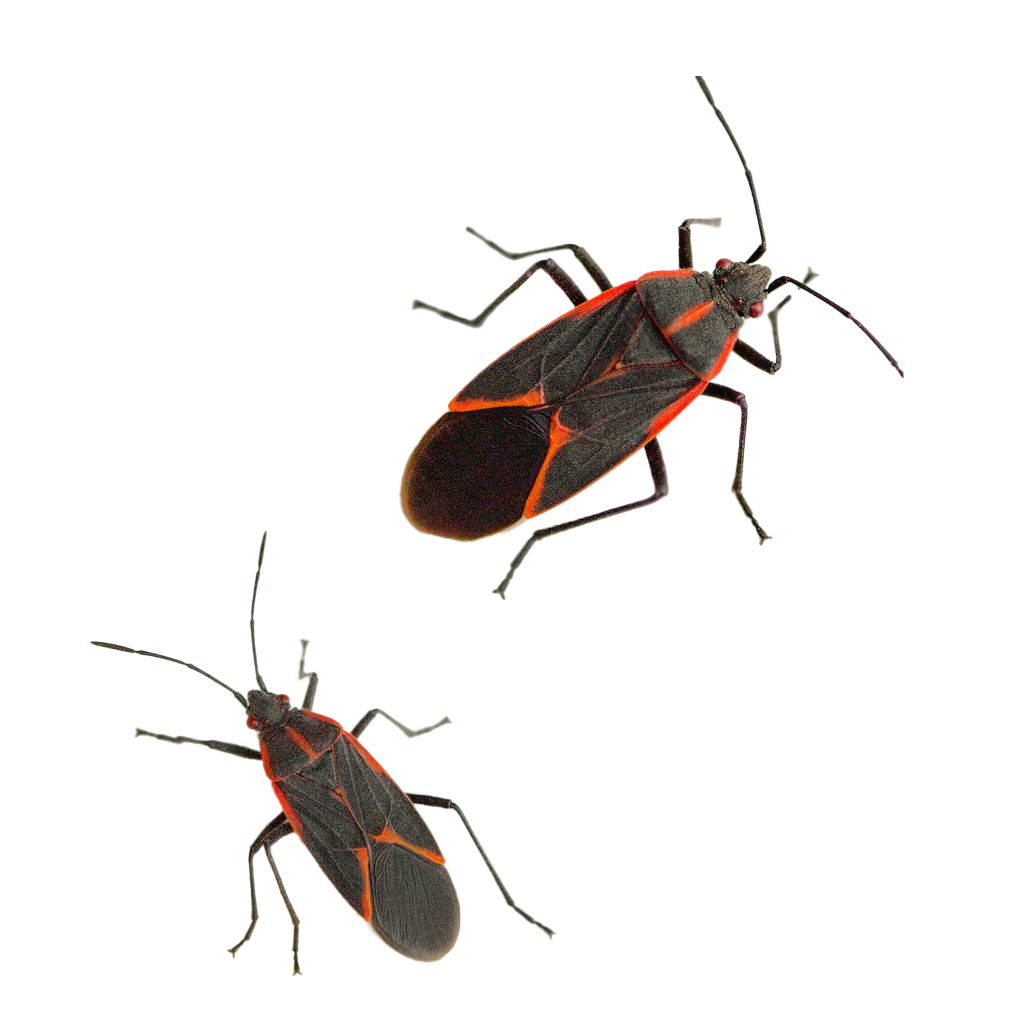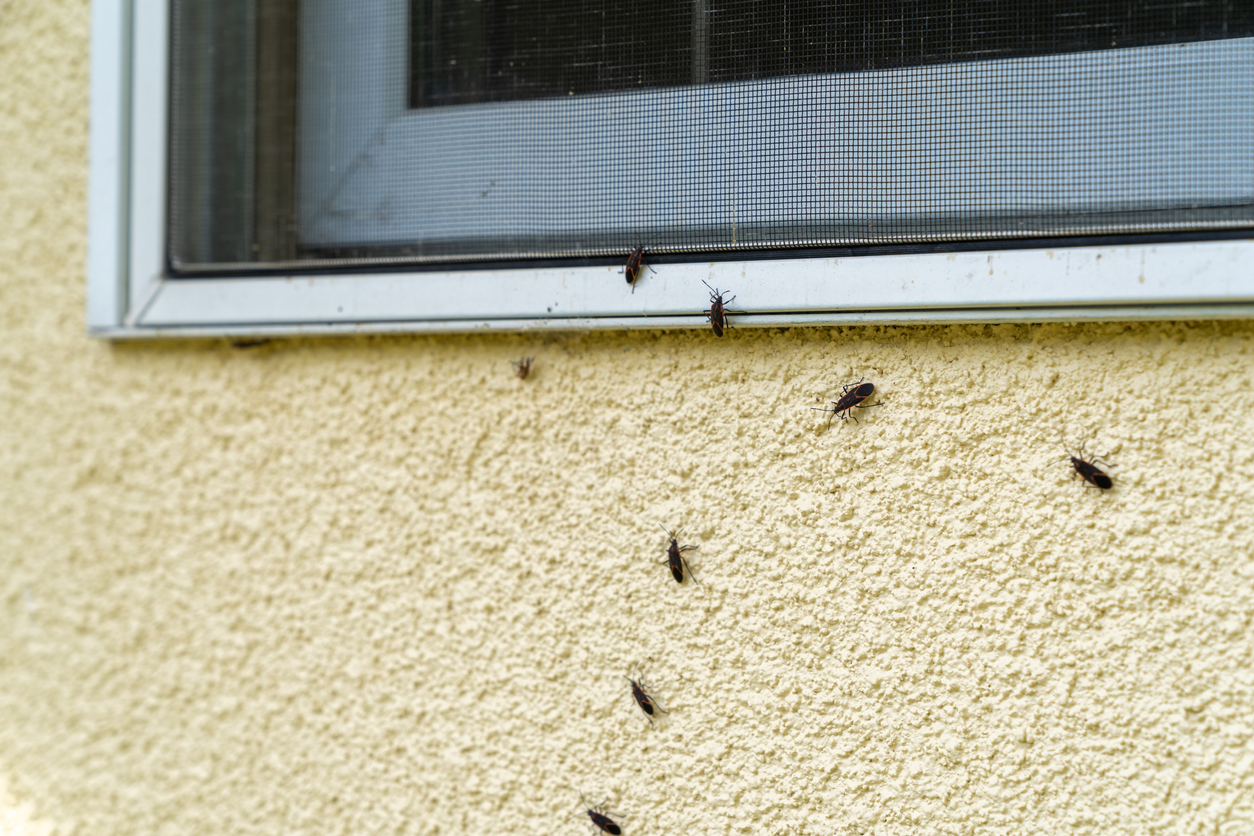Box Elder Bugs
Common Pest: Box Elder Bugs
The box elder bug, or Boisea trivittatus, can be identified by orange and red marks on a black body. They are about 1/2-inch long and have three stripes behind the head. This North American species of true bug is also commonly referred to as a maple bug. Box elder bugs feed on low vegetation on the ground during early spring and summer. Around mid-July, they move to female box elder trees to feed on the seeds. By late summer, they leave these trees to begin searching for overwintering sites. This is when box elders may enter homes, and they tend to seek out buildings with sunny exposure. In fact, box elder bugs invade the sunny side of your home by the thousands. Infestations are more common after a warm spring followed by a hot, dry summer.
Box elder bugs are a major food source for local birds
They prefer to lay their eggs under the siding, around windows, and under the roofline of your homes. When these eggs hatch the following season, a new beginning to the life cycle of infestations will follow. The reproductive lifecycle can sometimes take years to eliminate. A routine box elder pest control program can help eliminate this insect from your home in the long-term.
Home and business owners that experience an infestation may be able to visibly spot the bugs around windows, in attics, or in other cracks and crevices in the home. You are most likely to spot box elder bugs during warm days, since this is when they become most active. They also leave stains on walls, curtains, and other surfaces around the home or business. These stains are a result of excrement, and they may be the first sign of an infestation.
Box elder bugs are a major food source for local birds
They prefer to lay their eggs under the siding, around windows, and under the roofline of your homes. When these eggs hatch the following season, a new beginning to the life cycle of infestations will follow. The reproductive lifecycle can sometimes take years to eliminate. A routine box elder pest control program can help eliminate this insect from your home in the long-term.
Home and business owners that experience an infestation may be able to visibly spot the bugs around windows, in attics, or in other cracks and crevices in the home. You are most likely to spot box elder bugs during warm days, since this is when they become most active. They also leave stains on walls, curtains, and other surfaces around the home or business. These stains are a result of excrement, and they may be the first sign of an infestation.
Box elder bugs are mainly known as nuisance pests, because they do not reproduce once inside the home. However, they enter houses and other buildings in large numbers and can be difficult to exterminate once they reach the inside of a home. These bugs are not known to bite or harm humans, but they may leave an unpleasant odor when they are crushed.
The best way to avoid a box elder bug infestation is to take precautions in and around your home before late August. Be sure to repair damaged windows and screens, install seams under doors, and check for cracks in the exterior of the home. Residents can remove female box elder trees that exist close the home, but this process can be very invasive. Instead, call the experienced exterminators at Bugs by Brian to treat the exterior of your home or business before the end of August. This is the best way to prevent a box elder infestation.

St. Louis, Missouri
Email: scheduling@bugsbybrian.com
Call: (636) 394-0101
Location: 1401 Marsh Ave., Ellisville MO 63011
Melbourne, Florida
Email: scheduling@bugsbybrian.com
Call: (321) 674-1665
Location: 3830 S. Highway A1A Suite, 4135 Melbourne Beach, FL 32951
Ready to get started?
We offer free, no obligation estimates for all our pest control services.
Follow us on our social media plateforms

